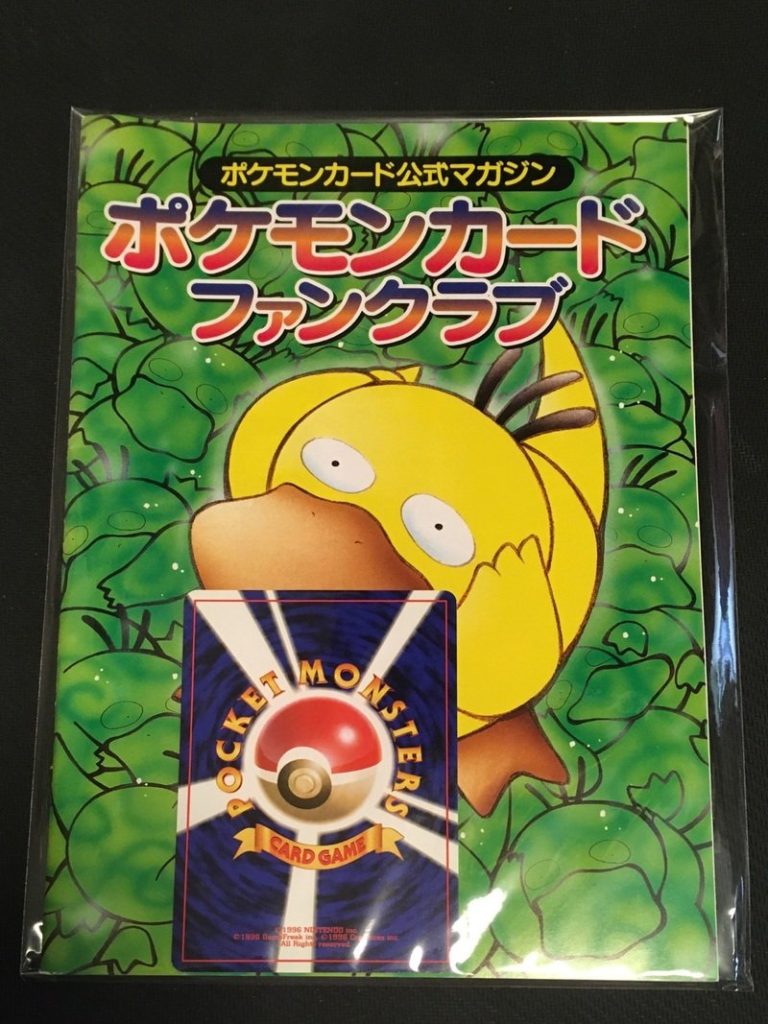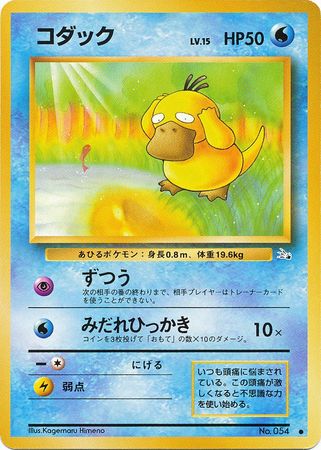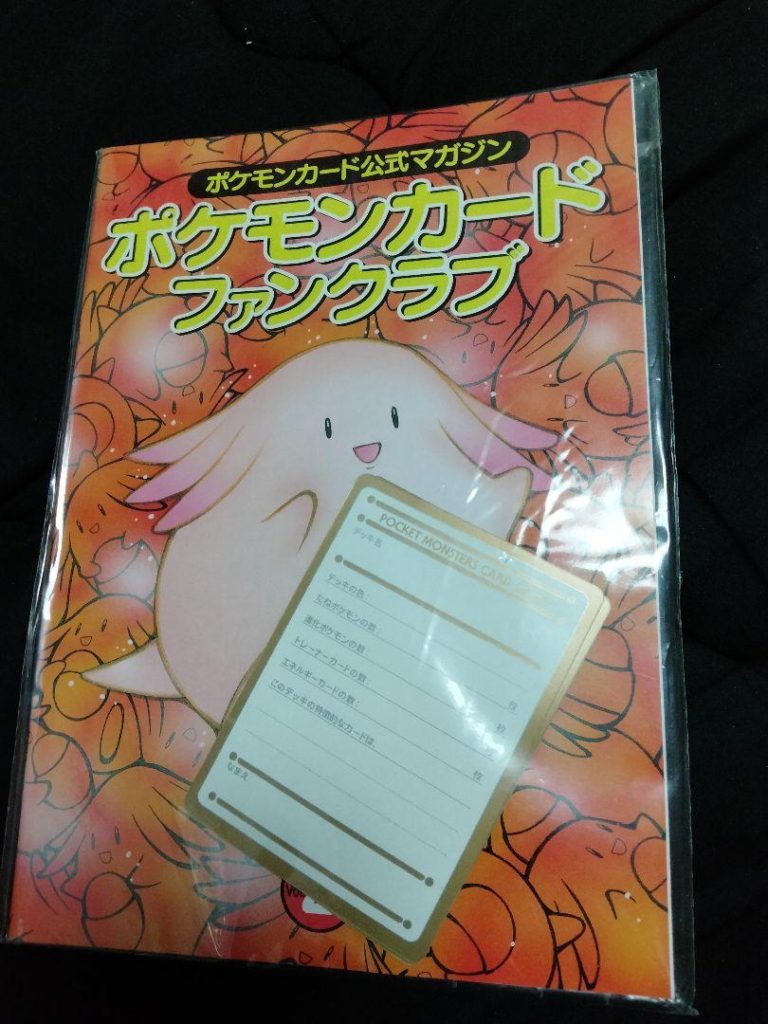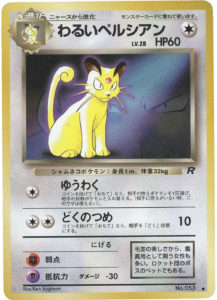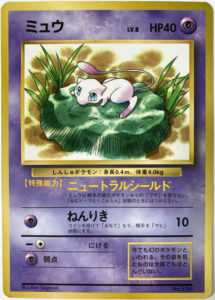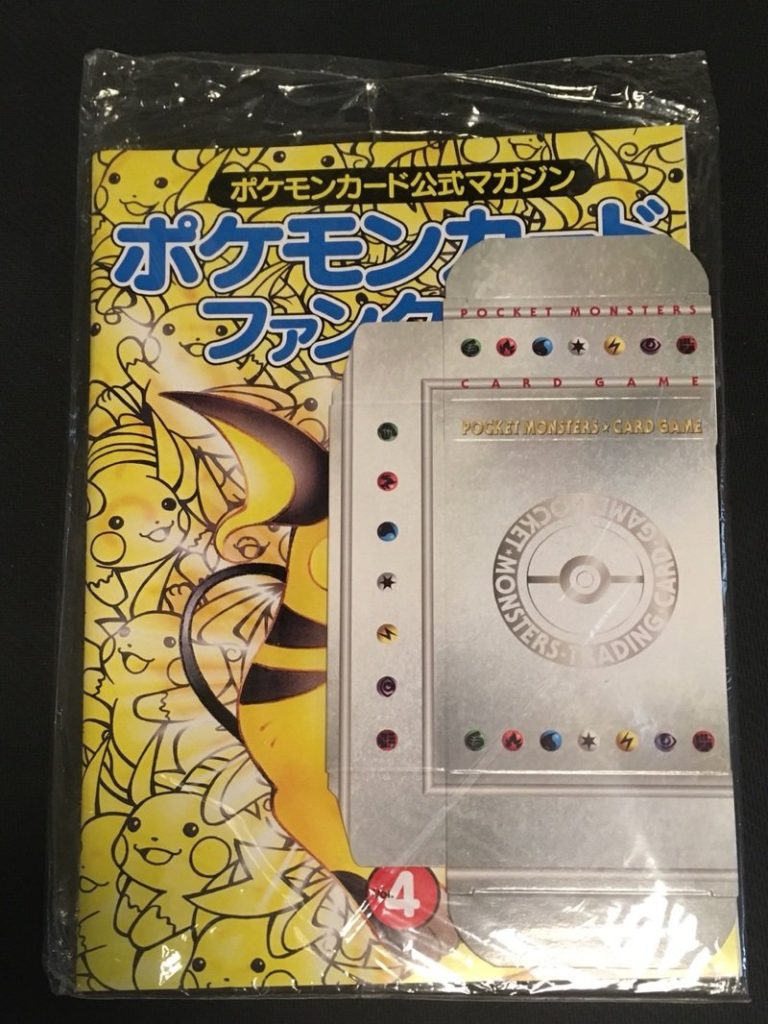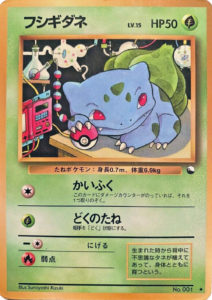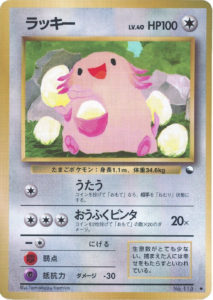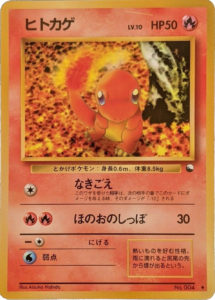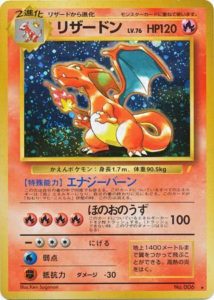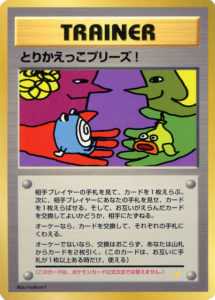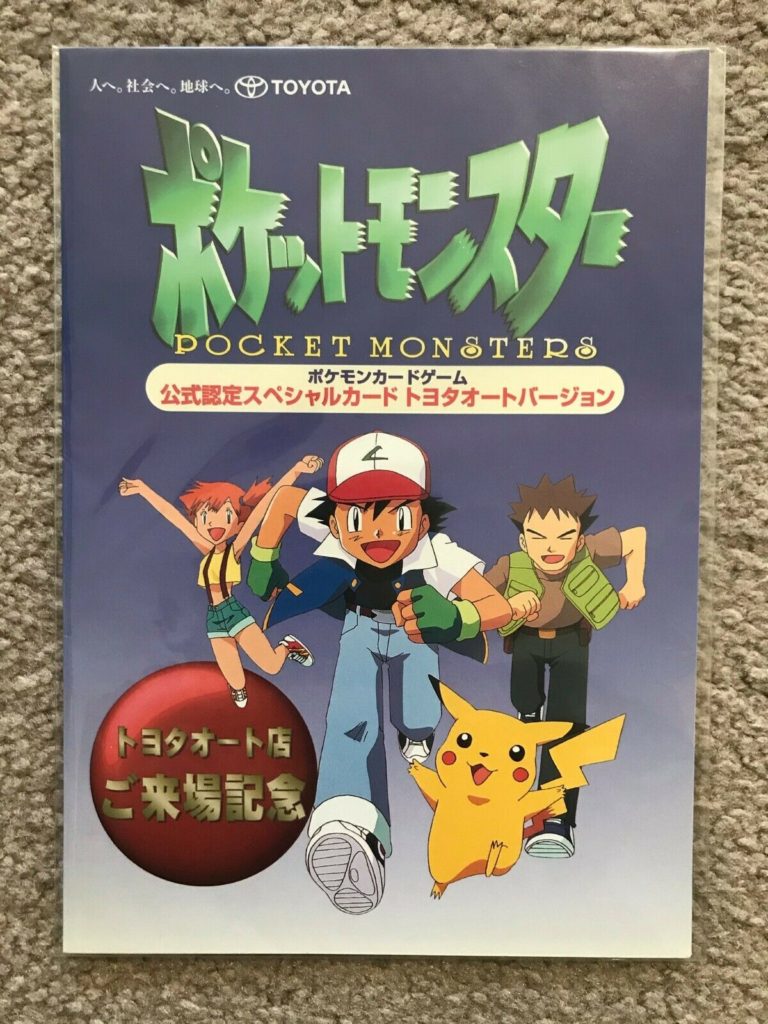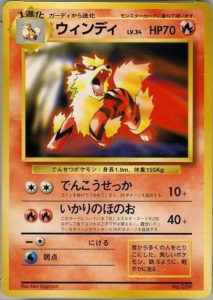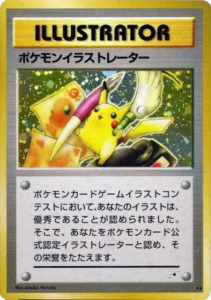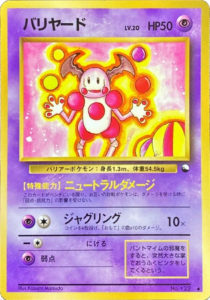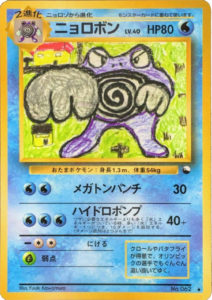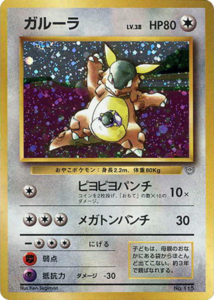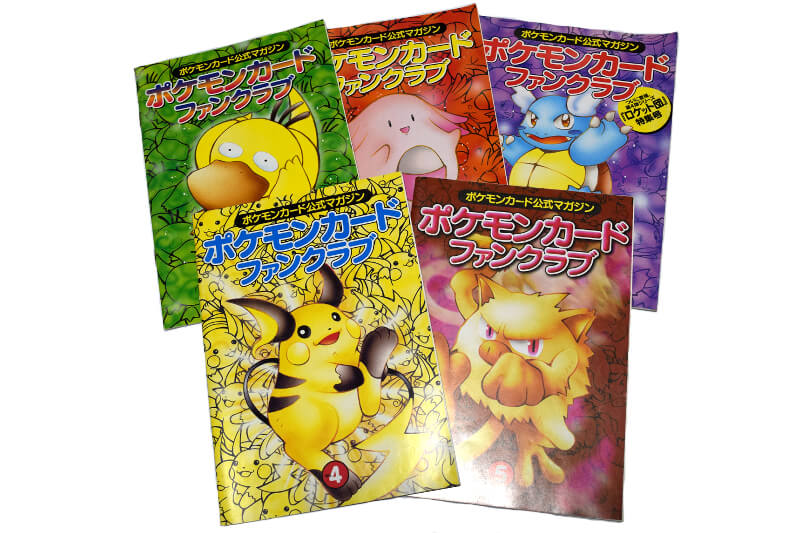
Pokémon Card Fan Club was a series of magazines published by Media Factory from June 5, 1997 to June 10, 1998. Afterwards, it was succeeded by the Pokémon Card Trainer’s Magazines.
The magazine was published once every 2 months, and cost 300 yen to purchase. They each included a special gift within the magazine’s plastic wrap.
Vol. 1
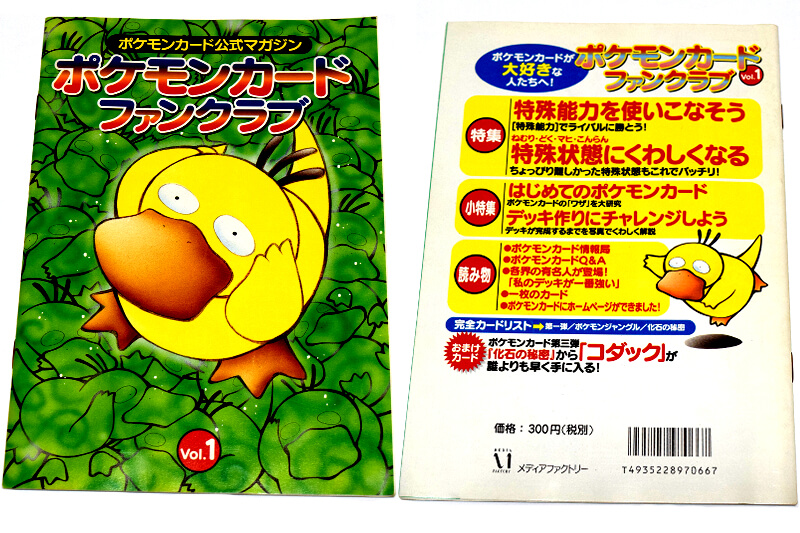
Vol. 1 was published on June 5, 1997. It included a Fossil Psyduck card. Notably, the magazine released before the Fossil expansion officially came out in Japan on June 21, 1997, meaning that Psyducks from this magazine were the first Fossil cards ever released. These cards are identical to the ones released in the regular set.
Pg. 4-6: Pokemon Card Information Bureau Vol.1
The “Information Bureau” section of these magazines would serve to announce new products or events happening in Pokemon.
Information on the new Fossil expansion (called “Mystery of the Fossils” in Japan), as well as pre-sale information.
Information on the Pokemon TCG exhibit at the 6th World Hobby Fair at Makuhari Messe, Chiba. This also announced the 1st Official Pokemon Card Game Tournament held there.
Pg. 7-23: “Let’s Become Stronger”

An educational section on various cards in the Pokemon TCG.
Vol. 1 focused on Pokemon Powers and Special conditions (confusion, poison, paralysis, etc).
Pg. 29-35: How to better understand how to use Pokemon Cards
This section offered tips on how to use Pokemon cards. In later issues it would also highlight preconstructed decks and how to use them.
Vol. 1 highlighted how to use Trainer cards, and also outlined the rules for deck construction since there were no preconstructed decks released at the time of publication.
Pg. 24-25: Card Highlight
This section highlighted a specific card each issue, and offered insight on how to use them in play.
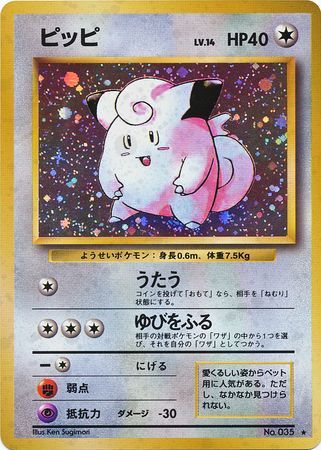
Vol. 1 highlighted Base Set’s Clefairy, and how to effectively use its Metronome attack.
Pg. 26-27: Kagemaru Himeno’s corner
A recurring section that served as a sort of blog for famed Pokemon illustrator Kagemaru Himeno.
In Vol. 1, various illustrations from Himeno were showcased. Additionally, she talks about the first episode of the Pokemon anime, as well as some of her favorite Pokemon.
Pg. 28 & 42: My Deck is the Strongest
On two pages in each magazine, celebrities or famous Pokemon personalities would showcase their decks.
Vol. 1 featured:
- Hitoshi Yasuda (安田均) – Founder of Group SNE, producers of another TCG called Monster Collection as well as light novels, board games, and RPGs.
- Shigeki Morimoto (森本茂樹) – One of the founding employees of Game Freak, later a programmer on almost all of the early Pokemon games. Creator of Pokemon’s battle system and Mew.
Pg. 44: Creatures Column
A guest section for various employees of Creatures Inc.
Vol. 1 featured a column by Koichi Ooyama, at the time a Pokemon TCG designer. He gave advice on making decks.
Vol. 2
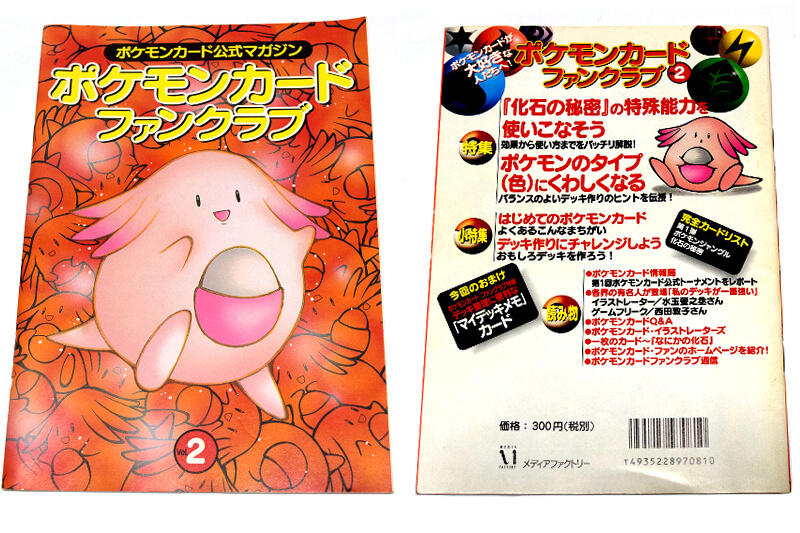
Vol. 2 was released on September 5, 1997. Its bonus gift was 2 copies of “My Deck Memo card”. This card was the same size as a Pokemon TCG card, and featured a Chansey design on the front. The reverse side allowed a player to write their name and deck details on it. It was likely meant to be put on top of decks to easily identify them.
Pg. 4-8: Pokemon Card Information Bureau Vol.2
Featured a tournament report on the 1st Official Pokemon Card Tournament at the 6th World Hobby Fair in Makuhari Messe, Chiba. This is one of the few written records of the tournament.
Pg. 9-19: “Let’s Become Stronger”
Vol. 2 focused on the Pokemon Powers of cards released in the Fossil expansion, such as Aerodactyl and Dragonite. It also went over Pokemon weaknesses and resistances, along with how to build a deck with complementary types.
Pg. 24-25: Pokemon Card Illustrators
Vol.2 featured 2 other Pokemon illustrators with photos of them at work, as well as short stories about their lives. This issue featured Mitsuhiro Arita, and Keiji Kinebuchi.
Pg. 27-35: How to better understand how to use Pokemon Cards
Vol.2 featured beginner-friendly ways to explain the rules of the Pokemon TCG with illustrations to make them easier to learn. There were also illustrations and photographs to assist beginners with deckbuilding.
Pg. ?: Card Highlight
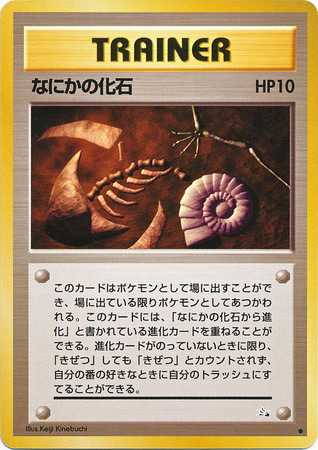
Vol. 2 highlighted Fossil’s Mysterious Fossil card, and how to use the unusual trainer card that also behaved like a Pokemon.
Pg. ?: Kagemaru Himeno’s corner
Along with more of her illustrations, Himeno wrote about her progress in playing Pokemon Red and Green Game Boy games.
Pg. 28 & 42: My Deck is the Strongest
Vol.2 featured decks from:
- Atusko Nishida (西田 敦子) – Pokemon card game illustrator
- Keinojō Mizutama (水玉 螢之丞) – Japanese illustrator and columnist known for her light novel Maoyu Maoyu Hero
Pg. 44: Creatures Column
Vol. 2 featured a guest column from Pokemon personality and musician, Imakuni?
Vol. 3
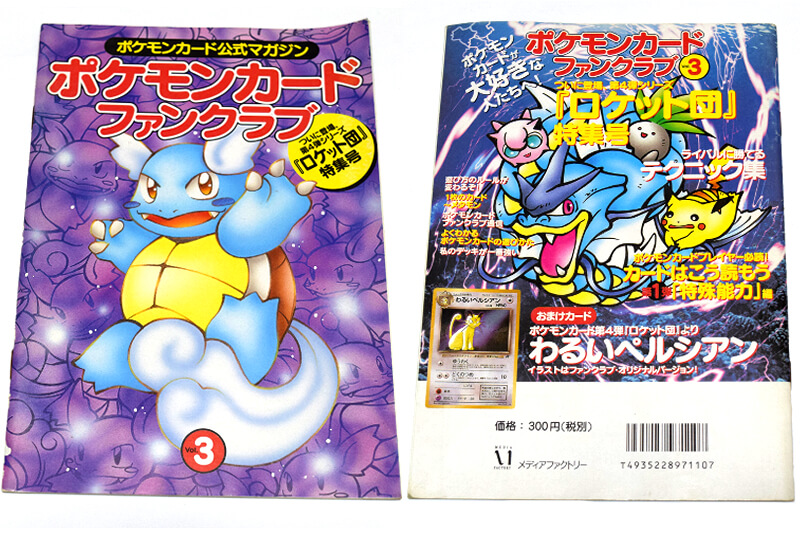
Vol.3 was released on November 18, 1997. For the first time, it featured an exclusive promotion card: a Dark Persion non-holo. This card had different artwork than the copy in the newly released Team Rocket expansion.
Pg. 2-7: Pokemon Card Information Bureau Vol.3
Featured information on the new Team Rocket expansion (it would release on November 21, 1997).
Also featured preview information on the Gym Heroes set, in particular Brock and Misty’s cards.
Lastly, this section had a report and photos from the 1997 JR Train Stamp Rally, where 2 exclusive promos were distributed.
Pg. 9-21: “Let’s Become Stronger”
Vol. 3 focused on utilizing Pokemon evolution timing, as well as a guide of what Pokemon to prioritize putting into play. It also went over some particularly complex card interactions that had emerged as more cards were released.
Pg. 22-23: Kagemaru Himeno’s corner
Himeno continued to write about her progress in playing Pokemon Red and Green Game Boy games.
Pg. 24-26: Card Highlight

Vol. 3 highlighted Fossil’s Ditto. Due to the complex and flexible nature of its Pokemon Power (Transform), the magazine dug deeply into different strategies that could be used.
Pg. 27-33: How to better understand how to use Pokemon Cards
Vol.3 continued to feature more illustrations explaining the Pokemon TCG rules. This time, more complex topics were covered, such as special energy cards.
Pg. 43: Pokemon Card Illustrators
Vol.3 featured a “behind the scenes” look into the painting materials and processes that Pokemon illustrators used. It featured some work from Kagemaru Himeno
Pg. 8 & 44: My Deck is the Strongest
Vol.3 featured decks from:
- Rieko Matsuura (松浦 理英子) – Novelist and short story writer. Winner of multiple literary awards.
- Kazutoshi Iida (飯田和敏) – Game designer, writer, and artist for games like Tail of the Sun and Quiz Caravan: Cult Q
Pg. 45: Creatures Column
Vol. 3 had Imakuni? return and filled this page with his “interesting” illustrations.
Vol. 4
Vol. 4 was released on February 28, 1998. It featured a foldable cardboard deckbox as a gift. The back cover of the magazie shows how the deckbox looks once constructed.
Pg. 2-10: Pokemon Card Information Bureau Vol. 4
Featured information on the first preconstructed decks for the Pokemon TCG: Brock & Misty’s decks.
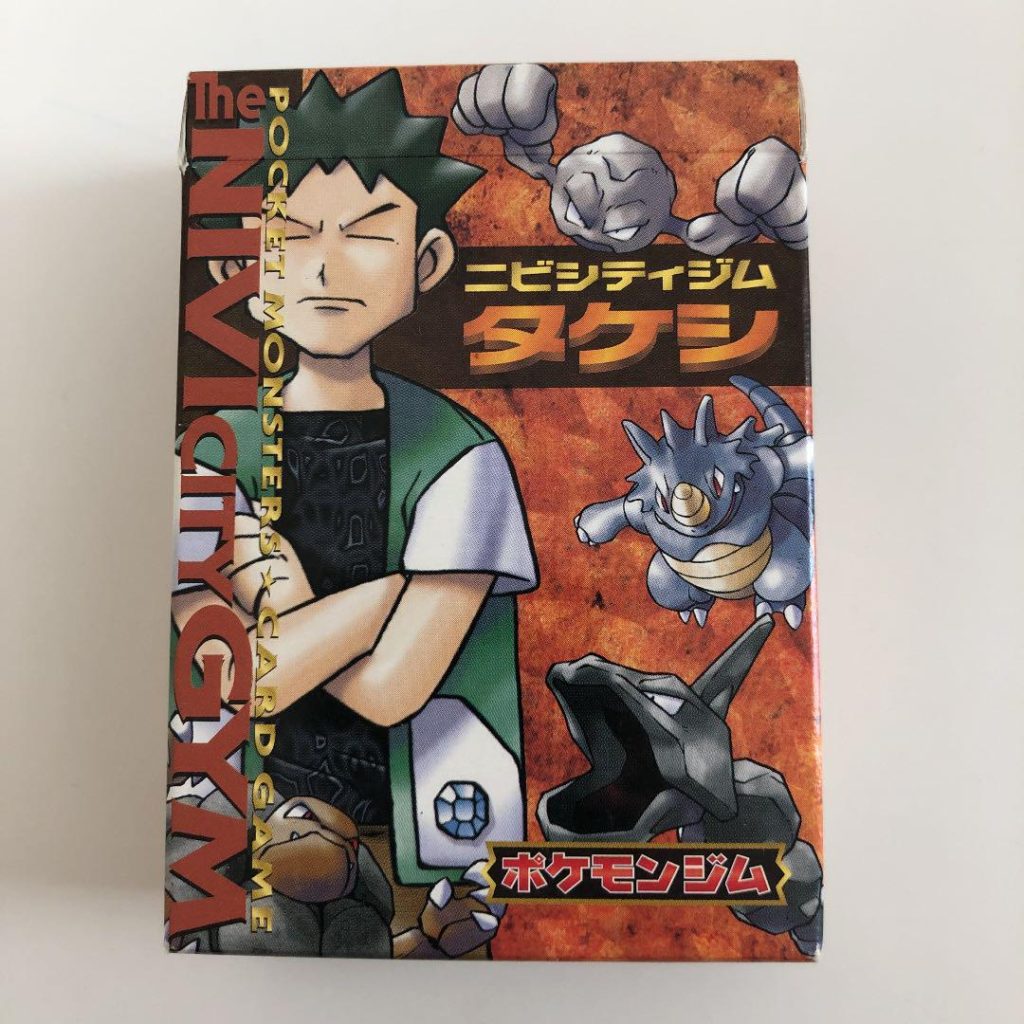
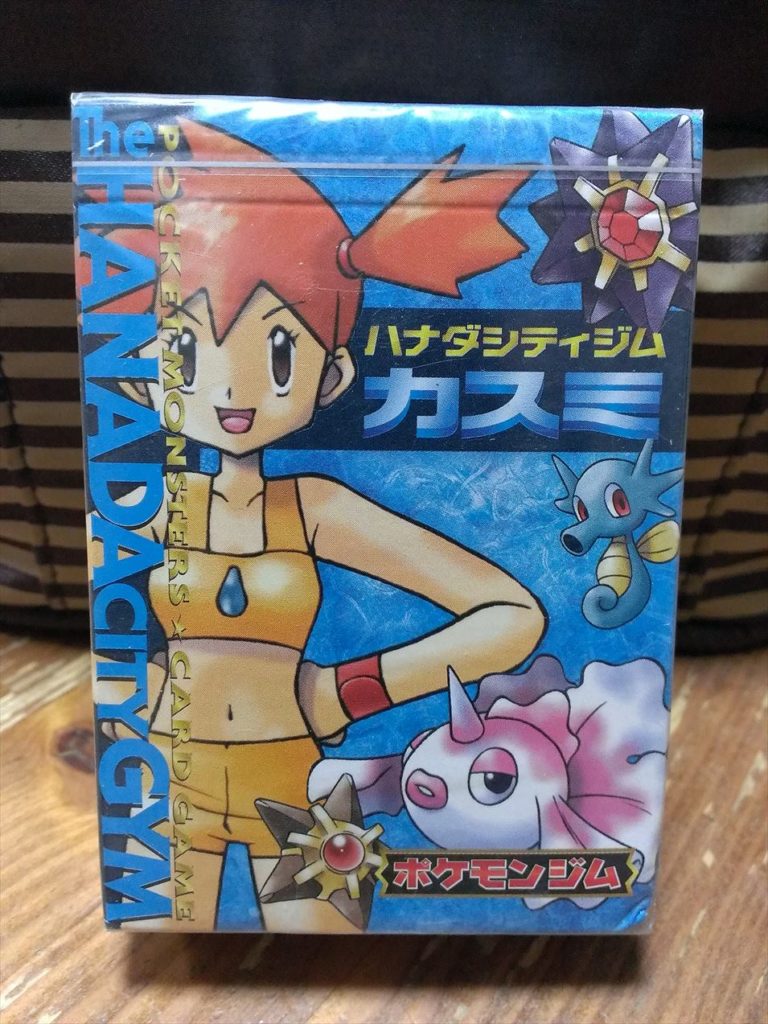
Featured information on the first series of the Vending machine cards, which would be released in March 1998 (around a month after this magazine was published).
Featured information on the “Trade Please” Campaign that released 3 new promo cards
Featured information on the October 1997 Toyota & Pokemon campaign
Lastly this section featured information on the “2nd Pokemon Card Official tournament”, also known as the Charizard Mega Battles.
Pg. 11-23: “Let’s Become Stronger”
Vol. 4 focused on how to use the newly released special energy cards like Rainbow Energy, as well as how to use the Dark Pokemon in the Team Rocket expansion.
This section also went into the new revised Tournament rules that were enabled with the 2nd Official tournament’s Nibi Cup in January 1998.
Pg. 24-25: Kagemaru Himeno’s corner
Himeno wrote about Bandai Namco’s “Pokemon Kids” product line, which were a series of soft vinyl figurines. These have been produced since 1996 and are still in production today.
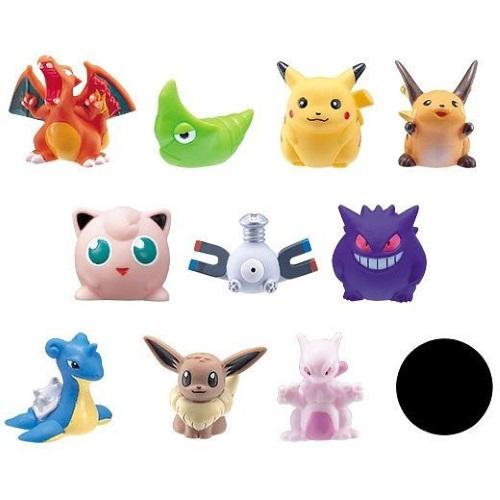
Pg. 26-27: Card Highlight


Vol. 4 had two card highlights: Pluspower and Defender. This section highlighted when and how to use these two trainers.
Pg. 28: Alternative game modes
This section introduced a new way to play the game: 5 deck battle. This format had each player bring 5 decks to play with instead of the usual 1.
Pg. 29-33: How to better understand how to use Pokemon Cards
Vol. 4 continued to feature more illustrations explaining the Pokemon TCG rules. This time, this section went over damage and special effects.
Pg. 34: My Deck is the Strongest
Vol. 4 featured a deck from:
- Kazuhiko Hachiya (八谷和彦) – Japanese contemporary media artist. Built the OpenSky M-02 motor glider inspired by Hayao Miyazaki’s Nausicaa, Valley of the Wind. Also built the PostPet email software.
Pg. 39: Pokemon Card Illustrators
Vol. 4 featured illustrator Miki Tanaka.
Pg. 44: Creatures Column
Vol. 4 feature a column from Koichi Ooyama. He wrote about his busy schedule with developing new products and the upcoming “Charizard Mega Battle” Best in Japan match.
Vol. 5
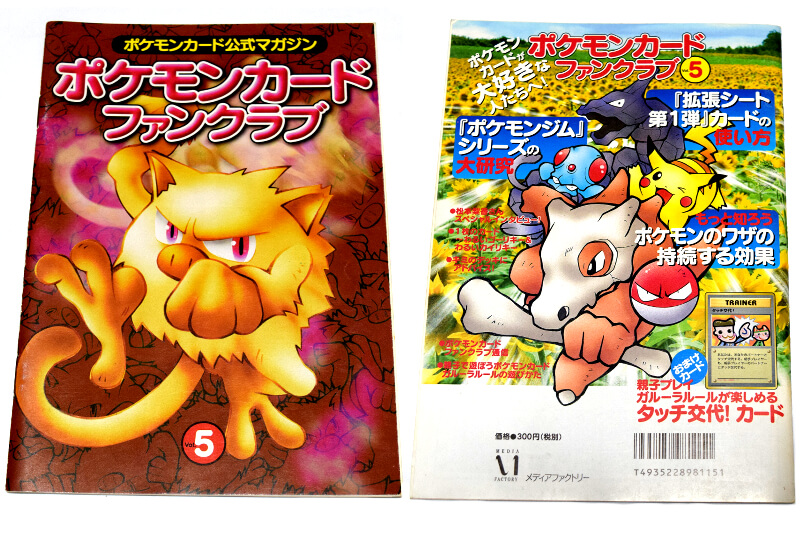
Vol. 5 was released June 10, 1998. This was the final volume of the magazine, as the Pokemon Card Trainer’s Magazine would take its place as the official Media Factory magazine publication. The magazine contained 4 copies of the Touch Change! Trainer card.
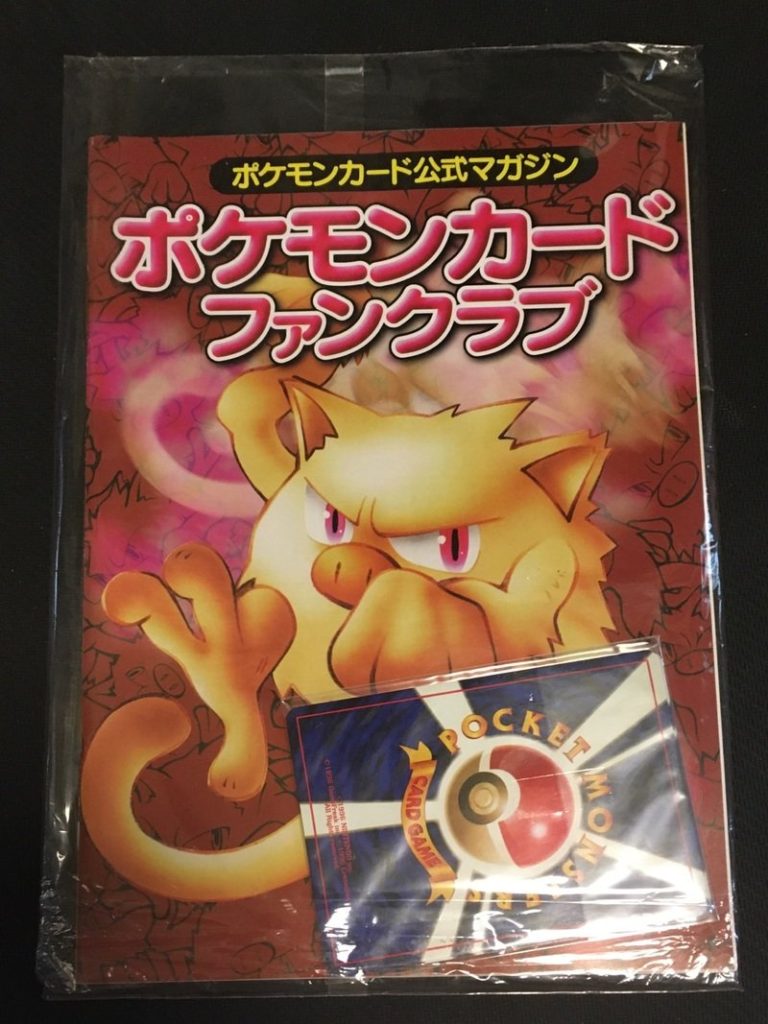
Pg. 2-10: Pokemon Card Information Bureau Vol.5
Featured information on the 3 winners of the CoroCoro illustration contest. The 3 winners received the coveted Pokemon Illustrator card, and would also have their cards printed in the first vending series.
Featured a tournament report on the second half of the “2nd Pokemon Card Official tournament” circuit, and the resulting “Charizard Mega Battle” match to decide the best player in Japan.
This section also featured information on the Parent & Child tournament that issued the exclusive “Trophy Kangaskhan” promo card. The included Touch Change promo cards with this magazine could be used to mimic the rule format of the tournament.
Pg. 11-25: “Let’s Become Stronger”
Vol. 5 featured information on how to play the 8 different Gym Heroes preconstructed decks. There were detailed instructions on how to play card in the decks. It also explained how to play with cards from the first vending machine series, since those had been released.
Pg. 26-27: Kagemaru Himeno’s corner
Himeno wrote about the Pokemon Pikachu pedometer toys that were released in 1998

Pg. 28-29: Card Highlight
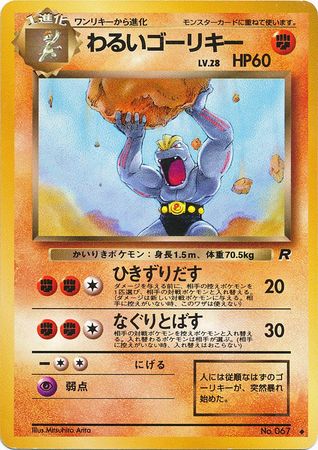
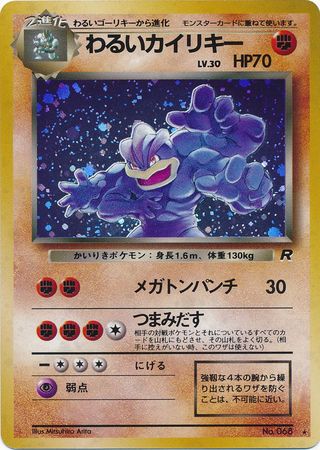
Similar to Vol. 4, the final issue of the magazine featured 2 cards in its highlights section. This time they featured 2 Dark Pokemon from the Team Rocket expansion: Dark Machoke and Dark Machamp.
Pg. 30-31: Let’s Play with Parents & Children
This section introduced the “Garura rule” used at the Parent & Child side events at the Charizard Mega Battle. Players were instructed to use the included Touch Change! promo card to try out this game format.
Pg. 29-33: How to better understand how to use Pokemon Cards
Vol.3 continued to feature more illustrations explaining the Pokemon TCG rules. This time, this section went over damage and special effects.
Pg. 35: My Deck is the Strongest
Vol. 5 featured a deck from:
- Milky Isobe – Art director for the Pokemon TCG packaging and card design. Would also go on to later illustrate several cards like Metal, Darkness, and Miracle Energy from Neo Genesis.
Pg. 38-39: Pokemon Card Illustrators
Vol.3 featured 2 illustrators: Toshinao Aoki and Sumiyoshi Kizuki.
Aoki described how he drew his pieces using an Amiga computer, while Kizuki described her technique of drawing with ink and sponges. She also went over how she designed several of the Team Rocket Machine trainer cards.
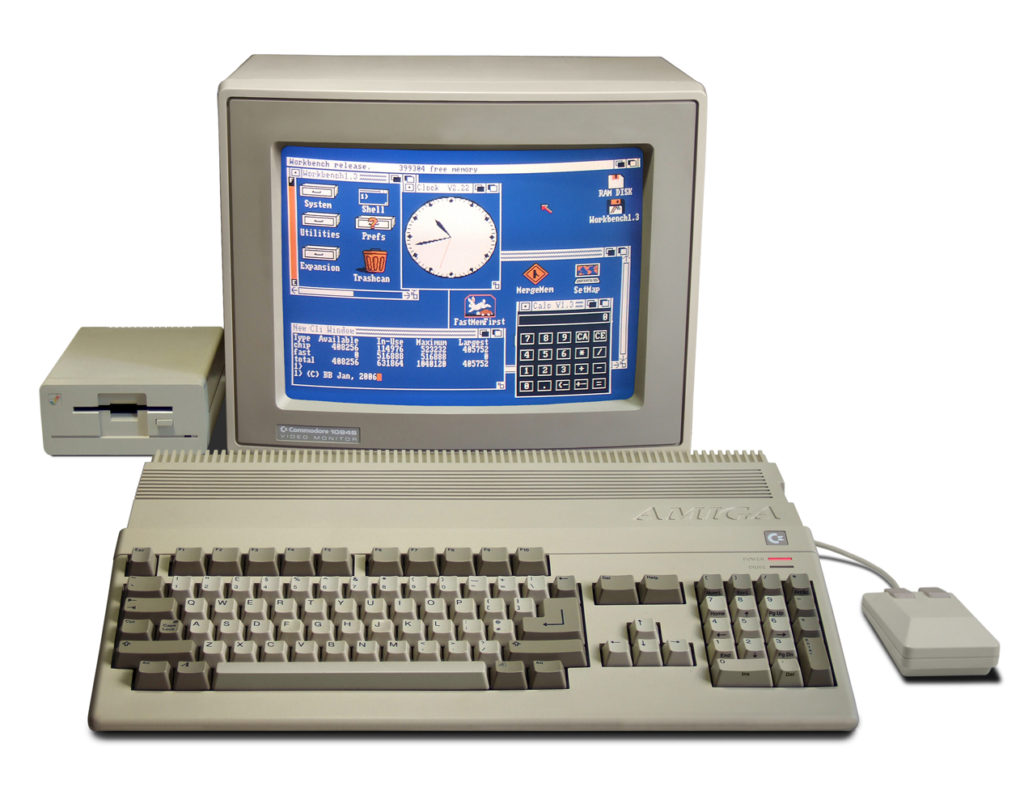
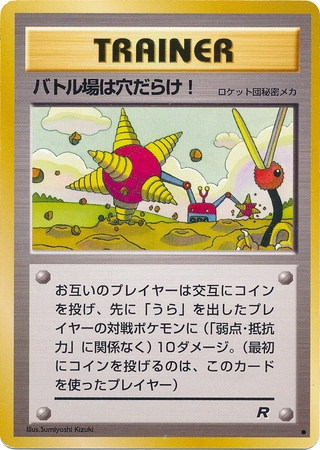
Pg. 40: Alternative game modes
This section described some rules on how to build decks with only common cards.
Pg. 44: Creatures Column
This section showed off prototype Pokemon cards and the development of the TCG.
Legacy
The Pokemon Card Fan Club Magazine would be succeeded by the Pokemon Card Trainer’s Magazine. The Trainer’s Magazine also began to include more exclusive promos with each issue, and people were able to subscribe to have the magazine delivered to them homes rather than having to buy each magazine for 300 yen.



